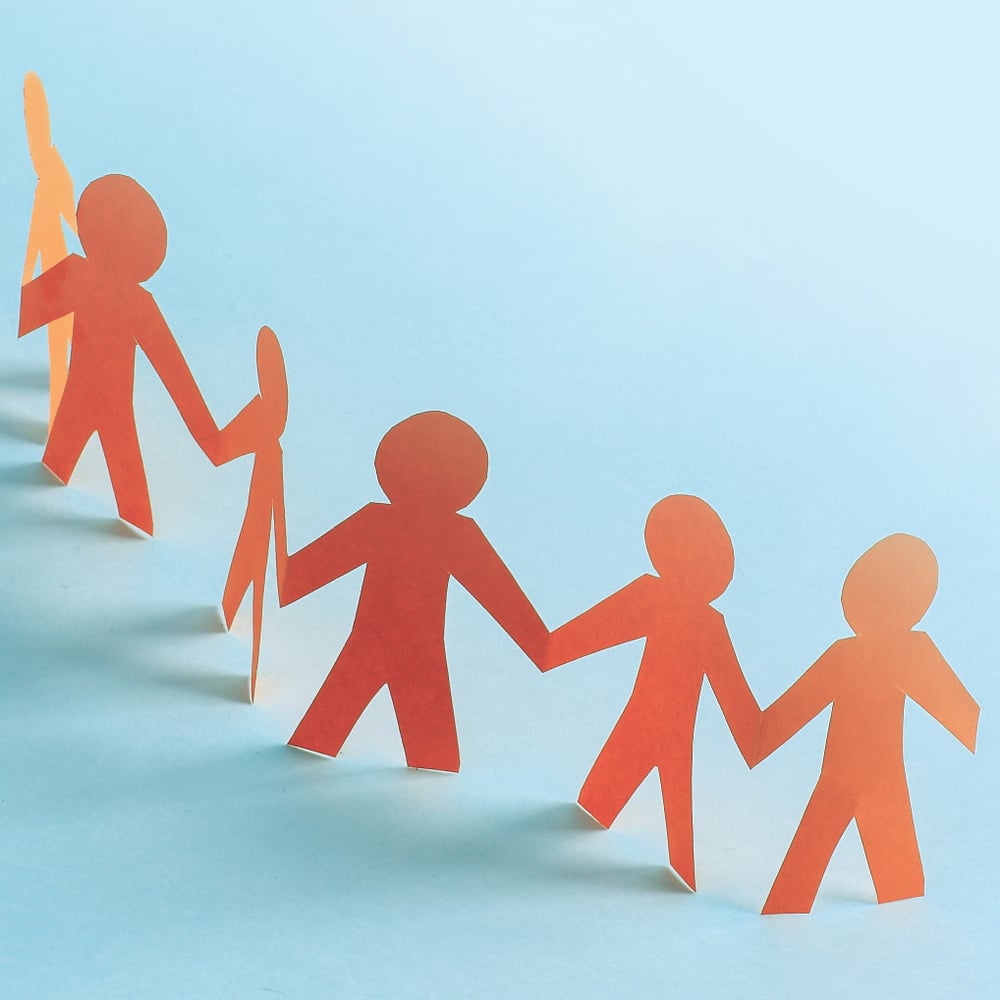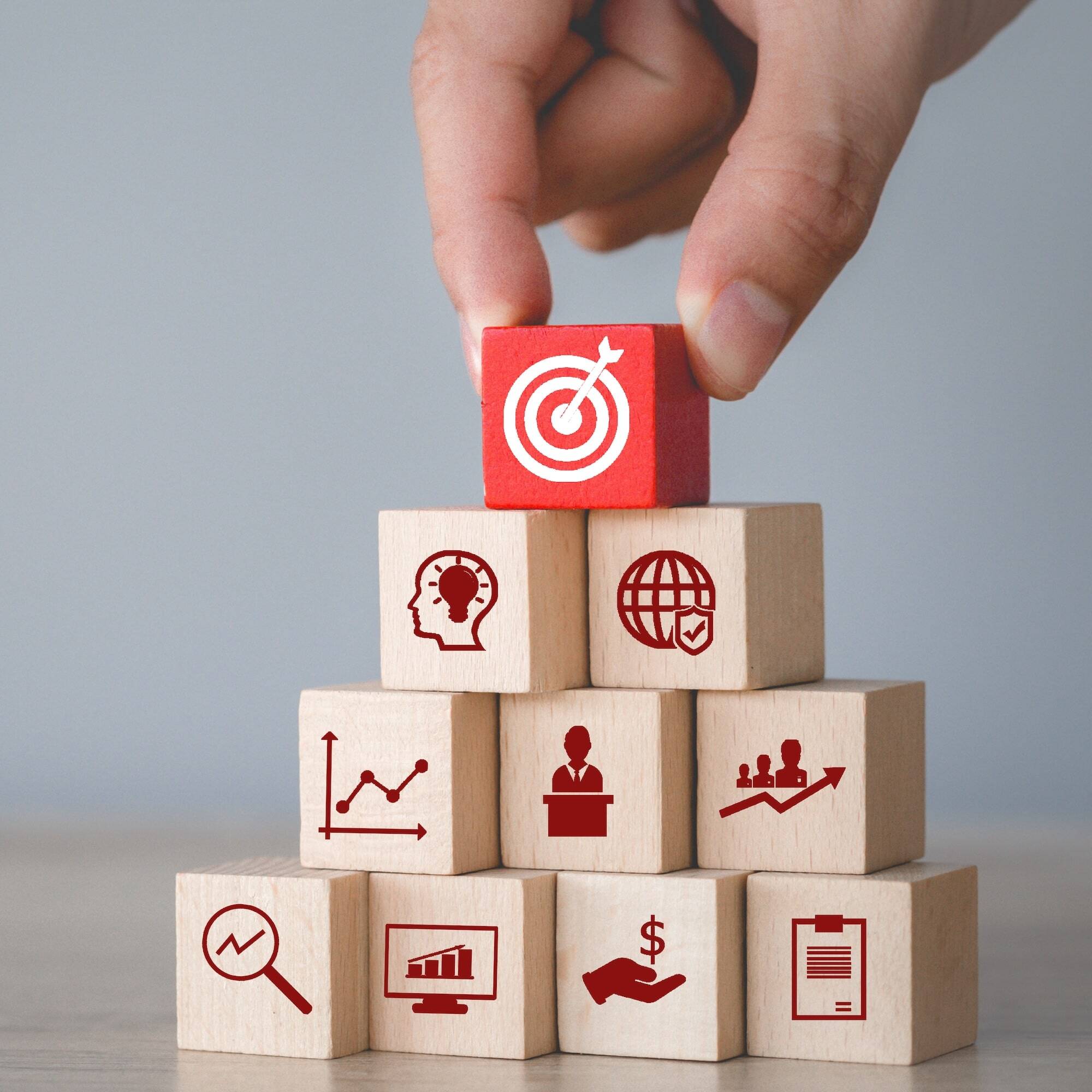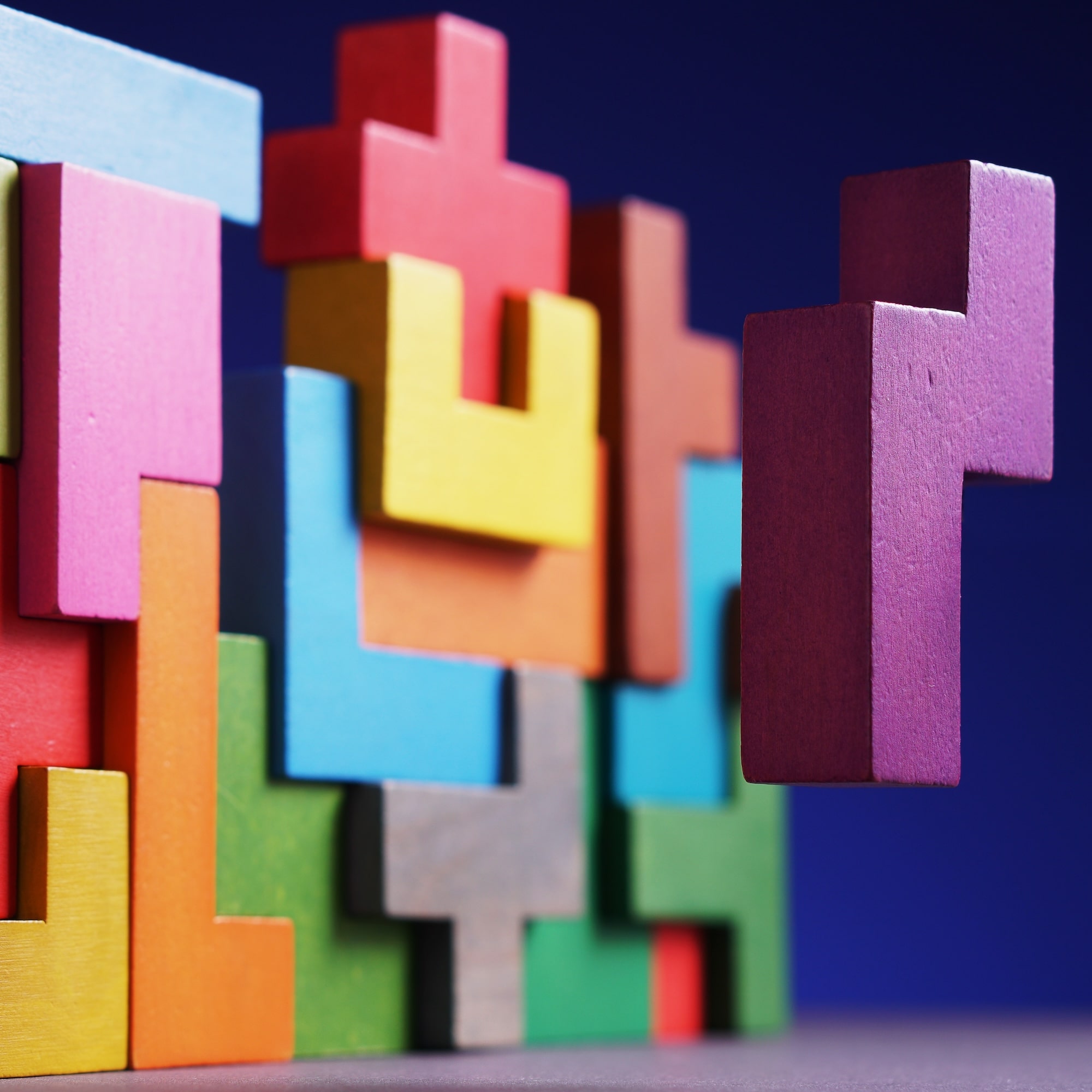When you think of employee recognition, what comes to mind? For a lot of people, it’s “Years of Service Awards” or “Long Service Awards” (LSAs), but why is that the case? For decades, organisations have been awarding their people for tenure. And this isn’t a bad thing – we want to recognise long-standing, hard-working people who make a difference at our organisations.
But in recent years, there’s been a shift in how people work and how often they change jobs – with the average tenure being 3.3 years.
At this rate, most people will not hit the typical milestones for employee service awards (five, 10, 20 years) and there are more effective ways to show your people you care about them every day. It’s time to move beyond the world of LSAs and tap into your organisation’s true recognition potential. Luckily, there are countless options to help you on your journey.
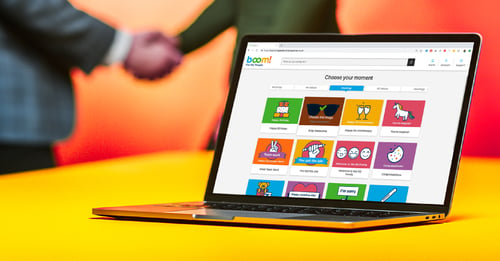
Why moving beyond years of service awards is key to boosting morale
Before we uncover the alternatives to years of service awards, it’s important to understand the why behind them. In a time of high turnover and low retention, the first couple of years of employment are crucial for recognition and awards. It’s key to improve the employee experience and make an impact from your new starter’s first day and every day forward, not just after they’ve hit the five year mark.
This isn’t to say that your 15-year, tenured employee (if you have one) isn’t looking forward to being celebrated. And it doesn’t mean that all celebrations are meaningless. But what if you could deliver rewards and recognition that are truly memorable, something that employees find impactful, personal and meaningful?
When employee service awards are done right, your people will feel recognised and appreciated.
Years of Service Awards can take up a lot of your headspace – there’s a lot of planning, budgeting and manual work that goes into making sure these awards are a success. Looking for a way to automate that process, ensuring your employees still receive these awards in a timely manner (say, right on the day or their anniversary) can help free up some of your time so you can focus on more continuous recognition that will have a greater impact on employee engagement. (We can help with that!)
Ask yourself: Are you rewarding people for simply staying at your company? This by itself will not move the needle on employee engagement.
Embrace a new reward and recognition framework to reach the most people at your organisation
If you have a large population of tenured employees, then long service awards are likely to reach a big percentage of your workforce. But this scenario is becoming less common and effective as the employee tenure landscape continues to change. Instead, there are many layers to reward and recognition that help organisations transform their culture by recognising good, great and exceptional behaviour more frequently, in different ways.
We like to call this a “culture of continuous appreciation.”
Each organisation’s approach will look a little different — some companies may want to focus on more recognition over reward, others may want to evolve their reward offering for more frequent and accessible spot bonuses, for example. But by following a framework, you can build the right reward and recognition strategy for your business. Here’s what that looks like:
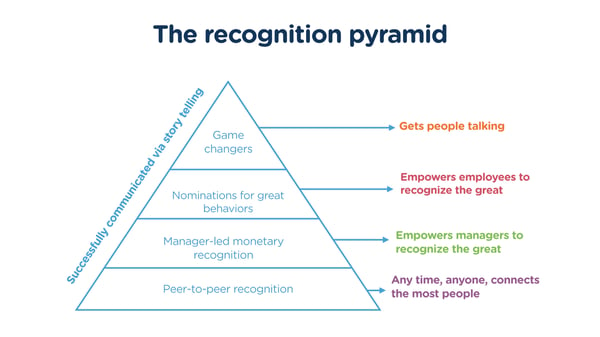 We call this our Recognition Pyramid. The width of the layers reflects the amount of people that recognition touches, with the goal of creating programs that reach everyone in your business in some way. The reason it is a pyramid shape is that as you go up the pyramid, the effort and impact increases, which means less employees are recognised.
We call this our Recognition Pyramid. The width of the layers reflects the amount of people that recognition touches, with the goal of creating programs that reach everyone in your business in some way. The reason it is a pyramid shape is that as you go up the pyramid, the effort and impact increases, which means less employees are recognised.
If your goal is to recognise consistently and fairly across your organisation, you need to focus on the bottom of the pyramid and work your way up. Many organisations in various industries have already adapted their employee recognition strategies to focus on everyday recognition, with awards and nominations still being a component of that.
Inspiring continuous recognition programs with 3 real-life examples
1. In 2015, feedback from employee surveys highlighted that PYBAR Mining Services’ people wanted to be recognised for years of service. To address the desire for more recognition, PYBAR introduced a service recognition program where employees received a certificate of recognition, a polo shirt and a limited edition item on their work anniversary.
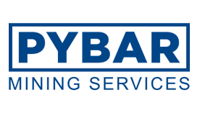
But managing and administering physical rewards also meant most employees experienced a delay in receiving the service recognition items or gift cards.
PYBAR decided it was time to move towards a tailored, multilayered recognition approach with real-time recognition, empowering employees to:
- “High Five A Mate” whenever they see someone demonstrating PYBAR values.
- Receive their service recognition and birthday greetings online via eCards which are published on a social recognition wall to increase visibility.
- Nominate each other for the monthly CORE awards both at the project site and online.
- Redeem their $100 award instantly at hundreds of retailers where employees also get a range of discounts, instead of waiting for physical gift cards to arrive in the mail.
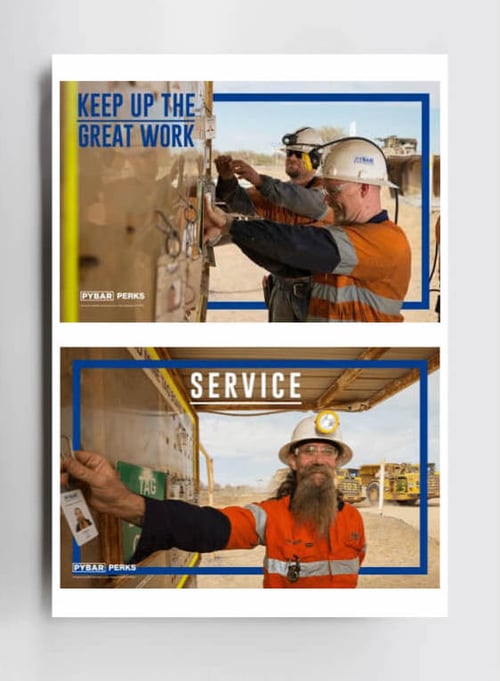
PYBAR uses peer-to-peer recognition to connect their people every day, and even features its very own people on the eCards!
Within the first 6 months of launch, PYBAR’s 800+ employees sent and received 450 moments of recognition and this number continues to climb as employees embrace more timely and meaningful reward and recognition.

2. In the past, Digestive Health Associates of Texas, P.A. (DHAT) relied heavily on service awards – particularly yearly luncheons to celebrate tenure – and quarterly awards. The organisation realised participation with the quarterly awards in particular was low – highlighting the need to update its recognition offering in order to celebrate great work all year long to boost morale and create a culture of appreciation in an industry known for high turnover.
DHAT implemented a new employee engagement platform, called “Digest This!,” to overcome its engagement challenges and provide a centralised hub for recognition that offers a consistent experience to employees. Its new initiatives include:
- Peer-to-peer and manager-led recognition and reward tools, including eCards based on their core values such as "Deliver an exceptional patient experience."
- A social recognition wall to make recognition more public, increase participation and improve relationships.
- Award nominations to recognise employees who go above and beyond more frequently, consistently and in the moment.
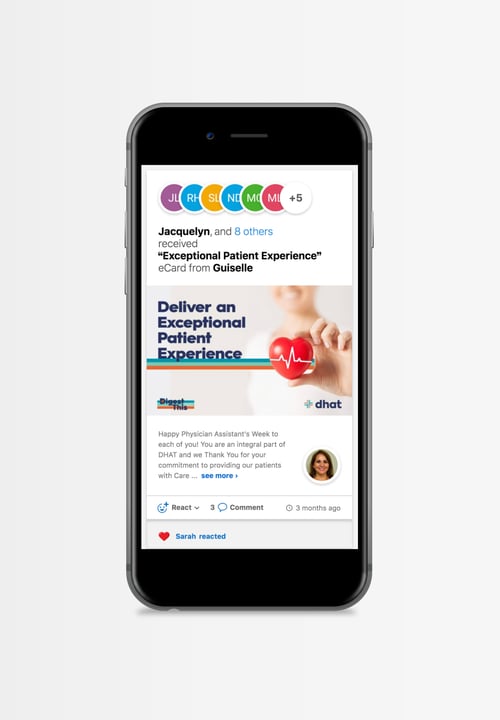
On DHAT's reward and recognition platform, employees can send one another team-based eCards which are shared on a social recognition wall to increase visibility.
Before launching Digest This!, the team at DHAT used to see about three to five nominations for the Employee of the Quarter award. Now they've received such an overwhelming number of nominations that they’ve changed the program to Employee of the Month, and the nominations keep rolling in.


3. In 2014, Thales’ annual people survey highlighted that employees didn’t think saying “thank you” was part of the Thales culture. Managers, in particular, didn’t feel as if they had the discretion to reward their employees for going the extra mile. The organisation realised it needed to offer a robust recognition offering which would link with organisational behaviours and business performance.
Thales implemented a new employee reward and recognition hub, called “Simply Recognition,” enabling their people to recognise great work every day and celebrate the smaller milestones that have a big impact on the organisation. On the hub, employees and managers can:
- Send each other eCards at any time and from any device that align with Thales new recognition design and are linked to the desired behaviours, including “Thank You” and “Congratulations.”
- Reward employees (or peers) who go the extra mile with monetary awards that are connected to the desired behaviours with three different levels: Bronze ($15), Silver ($30) and Gold ($65).
- Nominate colleagues for the “Above and Beyond Awards,” across five categories which are aligned to Thales’ values. Those who win receive a $325 voucher which can be redeemed at their chosen retailer on the hub and teams who win can celebrate with a group activity of their choice up to the value of $130 per person.
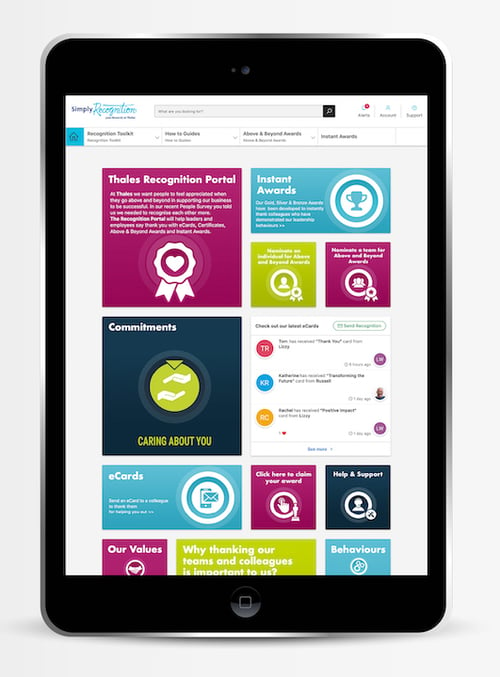
Thales' recognition hub features all of the different levels of recognition on the homepage to improve education, usage and visibility.
Since launching the platform, the organisation’s engagement score increased by 10% and this number continues to improve as the organisation embraces continuous recognition.
Years of Service Awards can be a helpful ingredient in your reward and recognition strategy. But alone, they are not going to improve employee retention and employee engagement alone.
To truly transform your culture into one where employees are excited to come to work each day, feel a sense of belonging and feel appreciated for the hard work they do, everyday recognition is essential. What moves are you making to transform your R&R program?
%20(1).jpeg) Alexandra Powell
Alexandra Powell
